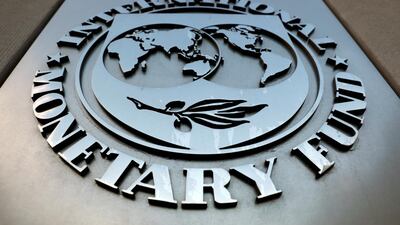As the International Monetary Fund slightly upgraded its global economic outlook last week, the reality on the ground appears to be less positive thanks to a surge in Covid-19 infections in many countries.
With policymakers appearing to be running out of ammunition at such a critical moment, thoughts of V-shaped recoveries are again going into abeyance.
As so often happens when the IMF releases its World Economic Outlook, the situation being faced by many countries appeared to be at odds with its overall messages. While the IMF reduced the extent of the global contraction expected this year to -4.4 per cent from -5.2 per cent in June, and signalled a still relatively strong rebound in 2021 of 5.2 per cent (albeit down 0.2 per cent from its June forecasts), the world was beginning to confront a second phase of the pandemic, which has seen more lockdowns and restrictions.
Admittedly, the IMF acknowledged the likely uneven nature of its rebound forecast, but as winter approaches, the conditions for the world economy continuing its recovery – seen during the summer – appears to be getting more difficult, not better.
Activity rebounded in the middle of the year, reflecting pent-up consumer and business demand along with unprecedented fiscal support measures designed to provide temporary income support. It also reflected quick and aggressive monetary policy responses from the world’s central banks. The global fiscal stimulus amounted to $12 trillion, while central banks expanded their balance sheets by $7.5tn.
However, with lockdowns and restrictions now returning in many countries and with no visibility yet over the availability of an effective vaccine, there is a significant risk that economic activity will soon run out of steam and begin to slump again. And this time around, global policymakers are also running out of ammunition to confront it.
Policymakers face a much more challenging situation in terms of providing ‘‘Phase 2’’ policy support than they did during the first phase of the pandemic, given the sharp increase in budget deficits and debt levels as a percentage of gross domestic product. Monetary policy has also long been perceived as running out of effectiveness given the widespread prevalence of negative or zero interest rates.
The IMF expects debt levels to go up significantly to about 125 per cent of GDP in advanced economies next year, and up to 65 per cent of GDP in emerging market economies. However, more debt can act as a drag on economic growth and undermine the effectiveness of other policy steps, with highly indebted countries often the worst performing in terms of economic growth.
For now, the IMF noted that low or negative interest rates should contain debt service costs, especially for advanced economies, indicating that now is not the time to engage in austerity to restore public finances back to health. However, looking ahead, it also observed that the ability of fiscal policy to provide further support might become more limited.
Fiscal support packages are certainly becoming less generous than they were earlier in the Covid-19 crisis and in the US, the timeline for Congress to pass a meaningful fiscal package is now fading as the November 3 presidential election comes into view. This puts the burden onto the central banks again, but what can they do?
The Bank of England is apparently preparing UK banks for negative interest rates, but the US Federal Reserve is more likely to go down the road of more quantitative easing programmes alongside credit support and easier terms and conditions for its loans. This may limit the upside for bond yields, but investors might be right to wonder what real difference this will make.
With analysts again dusting off their lexicons for the likely shape of the economic recovery from V to U to W or K, some commentators abandoned alphabetic metaphors completely and instead described the UK recovery, for example, as likely to be ‘‘pear-shaped’’. Whatever shape the recovery turns out to be, the headwinds to markets are clearly returning as vulnerabilities increase, leaving investors quite likely to remain nervous and probably defensive.
Tim Fox is a prominent regional economist and financial markets analyst


